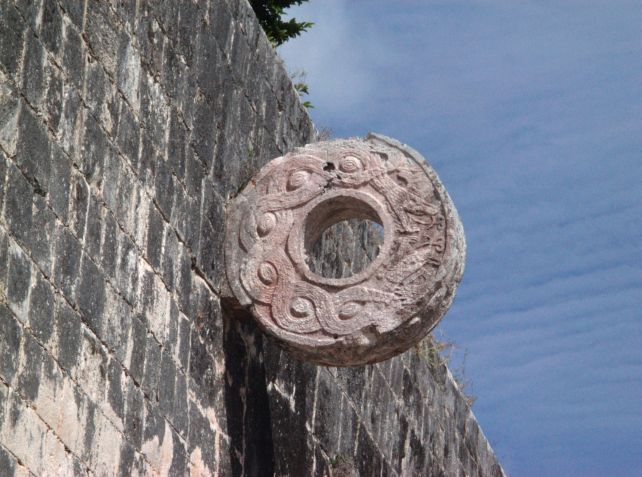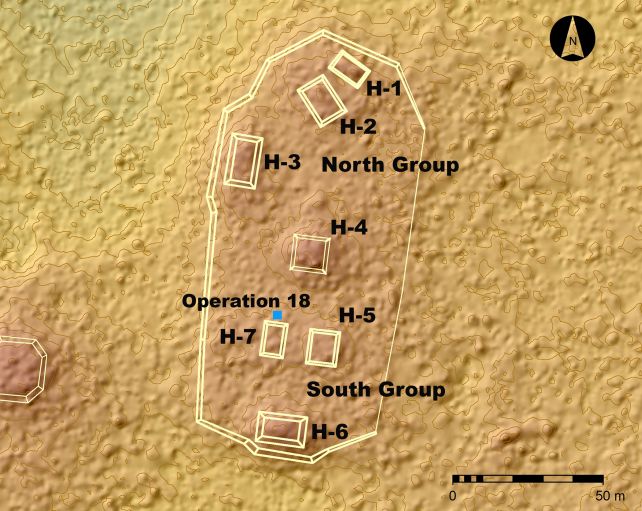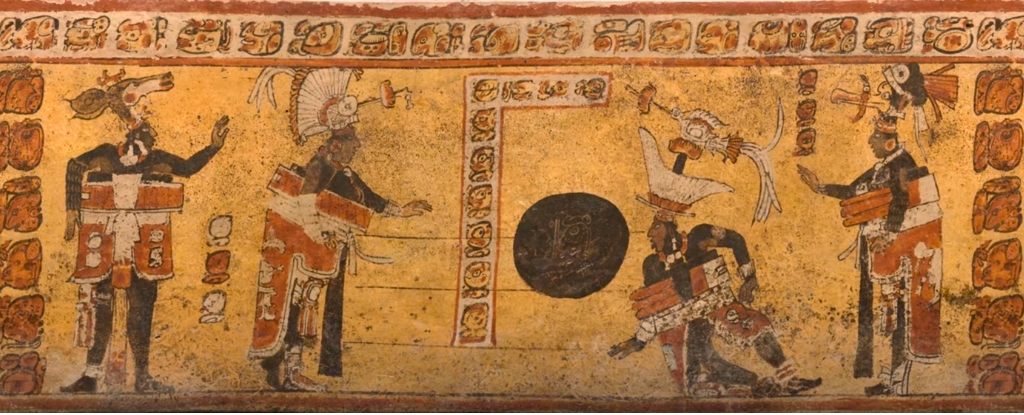Products You May Like
It’s no secret that sports fanatics tend to treat their favorite game as a sacred thing, but a new discovery suggests the ancient Maya took it to a whole new level.
Beneath the paved floor of a plaza determined to be a court for Maya Ballgame, archaeologists have identified plants used for ceremonies. These plants have medicinal properties and are associated with religious use – including a plant with known hallucinogenic effects, whose use had never been previously seen in Maya contexts.
This discovery, says a team of archaeologists from the US, Canada and Mexico, is likely from a ritual blessing of the court during construction, a ceremonial offering to ensure goodwill and good fortune.
“When they erected a new building, they asked the goodwill of the gods to protect the people inhabiting it,” says archaeologist David Lentz of the University of Cincinnati, the paper’s first author. “Some people call it an ‘ensouling ritual,’ to get a blessing from and appease the gods.”
The discovery was made in Yaxnohcah, an ancient Maya city that thrived from about 1,000 BCE to 200 CE, in what is now Campeche, Mexico. There, excavation revealed a prominent plaza, which archaeologists determined was a ballcourt.

Ball games constituted a very important part of Maya society. It wasn’t just sport, the way we experience it today; Ballgame was a religious act, one that venerated the Maya gods and heroes, reaffirmed their devotion to their gods, and sometimes even included the sacrifice of important captives following a match.
“We think of ballcourts today as a place of entertainment. It wasn’t that way for the ancient Maya,” Lentz says. “Ballcourts occupied prime real estate in the ceremonial center. They were a fundamental part of the city.”
The Yaxnohcah ballcourt was discovered on a stone platform known as the Helena complex, which had been standing and in use for some time before the ballcourt was added, around 2,000 years ago. When additions were made to such platforms, it was common for an offering to be made to bless the site and the alteration.
The researchers were undertaking fieldwork at the site when they found traces of organic matter that had been buried beneath four levels of paved stone, and thus remained relatively preserved since the court’s construction. It was impossible to tell what was in the degraded matter just by looking at it, but techniques for sequencing ancient DNA were more than up to the task.
When the researchers studied the sediment, they found a high concentration of material from plants that were important to the Maya.

Among the 15 or so plant species, the researchers found Ipomoea corymbosa (xtabentun in the Maya language), a climbing flowering vine similar to morning glory, with hallucinogenic properties. They also found chili peppers or Capsicum sp. (ic in Maya), which were used for medical and culinary purposes; Hampea trilobata (jool), a tree whose leaves were used to wrap bundles of food bark was used to make twine for baskets; and Oxandra lanceolata (chilcahuite), another medicinal plant.
“I think the fact that these four plants, which have a known cultural importance to the Maya, were found in a concentrated sample tells us it was an intentional and purposeful collection under this platform,” explains botanist Eric Tepe of the University of Cincinnati.
The concentration of the plants underneath the platform suggests they were placed together as a bundle. The presence of the jool DNA could mean that the rest of the plants were wrapped either in its leaves or a basket woven from its bark.
What exactly the ritual entailed is unknown. It’s possible that it had to do with healing, or the transformation from a domestic to a ceremonial space. What does seem clear is that a ritual took place, directly related to the ballcourt, with an offering of plants that had deep significance to the Maya.
“As we have seen, the Maya are known to place healing bundles below floors as a protective measure to ward off external causes of illness,” the researchers write in their paper.
“An even stronger possibility, however, was that this was part of an ensouling or fix earth ritual designed to propitiate the gods in a way that would ensure their blessings in subsequent activities associated with the newly constructed ceremonial ballcourt space.”
The team’s research has been published in PLOS ONE.
